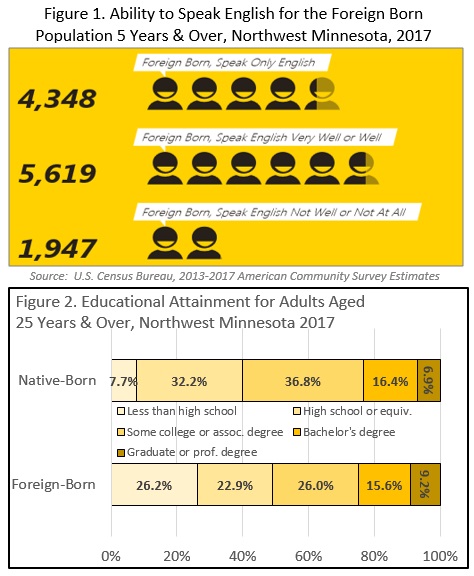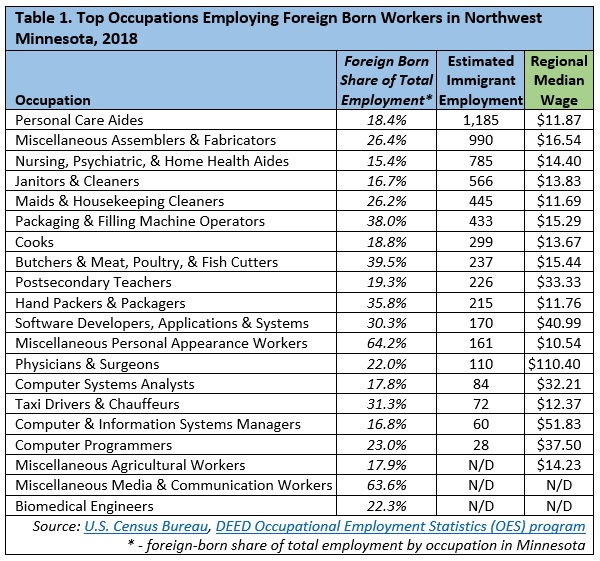 The presence of such industry powerhouses as Polaris, Arctic Cat and New Flyer make Northwest Minnesota a hub of transportation equipment manufacturing.
The presence of such industry powerhouses as Polaris, Arctic Cat and New Flyer make Northwest Minnesota a hub of transportation equipment manufacturing.
From wheat and potatoes to soybeans and sugar beets, the region is a major producer and processor of food staples and specialty agricultural products.
Want the freshest data delivered by email? Subscribe to our regional newsletters.
4/2/2019 5:00:00 PM
Cameron Macht
As detailed in last month’s Local Look blog, immigrants are becoming an increasingly important part of Northwest Minnesota’s labor force. One challenge for immigrants assimilating in a new culture is language, but many new Minnesotans have made headway. About 63.5 percent of immigrants in Northwest Minnesota reported speaking a foreign language, but many also had some ability to speak English. Three-fourths reported being able to speak English “well” or “very well” while the others spoke English “not well” or “not at all” (Figure 1).
Foreign-born adults had a higher percentage of bachelor’s and advanced degrees, helping to fill high-demand openings in health care and computer-related fields. However, about 50 percent of foreign-born residents aged 25 years and over had a high school diploma or less. This sizeable number shows that many immigrants may need access to education to be prepared for the workforce, where jobs for high school graduates are in high demand (Figure 2).

Perhaps due in part to the language and educational characteristics described above, immigrants were much more likely to work in certain occupational and industry groups than native-born workers. For example, foreign-born workers were found more often in service occupations, which includes health care support, protective service, food preparation and serving, building and grounds cleaning, and personal care occupations. Immigrants were also more concentrated in production, transportation, and material moving occupations.
Some of these occupations are already showing critical workforce shortages in Northwest Minnesota, including nursing, psychiatric, home health and personal care aides as well as computer and construction-related occupations. Along those same lines, foreign-born workers were much more likely to be found working in manufacturing, leisure and hospitality, and administrative support and waste management services – which includes temporary staffing services. Immigrants were less likely to be employed in retail trade, public administration, finance, real estate, and construction (Table 1).

Contact Cameron Macht at 320-441-6596.